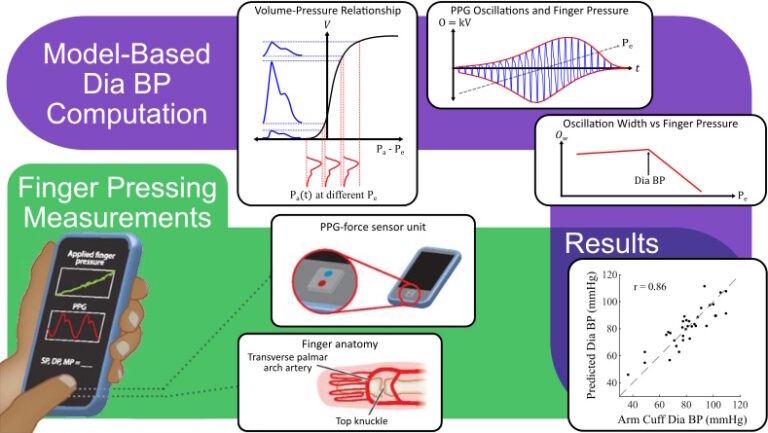Oscillometric finger pressing is a potential method for blood pressure (BP) monitoring via a smartphone. It shows promise for global hypertension screening and control without ever requiring an arm cuff. The user needs only follow the smartphone’s visual guidance to press their fingertip against a photoplethysmography-force sensor unit on the phone, steadily increasing the external pressure on the underlying artery. Lastly and crucially, the phone must then convert recorded blood volume oscillations at the various pressures into BP estimates.
This study evaluated potential, reliable finger oscillometric BP computation algorithms. It sought to exploit a model of oscillometry that predicts the effects of collapsibility seen with thin-walled fingertip arteries. The proposed algorithms extract features from pulse-derived “width” oscillograms (pulse oscillation width versus finger pressure functions) and the conventional “height” oscillograms to indicate diastolic BP (DP) and systolic BP (SP).
Finger pressing measurements were obtained using a custom system along with reference arm cuff BP measurements from 22 subjects. Compared with the arm cuff, finger pressing data showed that an algorithm employing the average of width and height oscillogram features could predict DP with correlation of 0.86 and precision error of 8.6 mmHg. Additionally, a tandem analysis of these features in pre-existing oscillometric arm cuff pressure waveforms supported the prediction that they are better suited to oscillometric finger pressing.
This study has taken a step to improve non-invasive BP estimation that could be readily deployed globally via smartphones. Future work will be needed to confirm the accuracy of these algorithms in diverse people and provide a complete BP monitoring solution.

